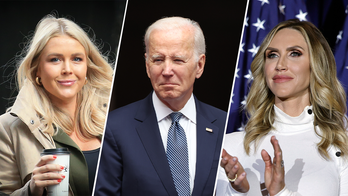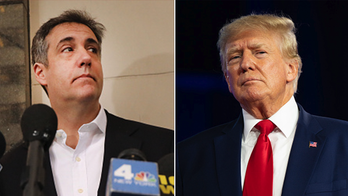WASHINGTON -- Federal Reserve Chairman Ben Bernanke said Wednesday that the central bank is prepared to provide additional stimulus if the current economic lull persists.
Delivering his twice-a-year economic report to Congress, Bernanke laid out three options the central bank would consider. One possibility, he said, was another round of Treasury bond buying. That would make the third such effort since 2009.
But Bernanke also said the Fed was prepared to raise interest rates, should inflation become a threat.
Stocks jumped after Bernanke signaled the Fed's willingness to take additional steps boost the sluggish economy. The Dow Jones industrial average rose more than 150 points in early-morning trading, and broader indexes also increased.
The Fed last month agreed to end on schedule its program to boost the economy through the purchase of $600 billion in Treasury bonds. But the central bank acknowledged that economy had slowed in the first half of the year. As a result, it lowered its economic growth forecast for 2011 and said unemployment wouldn't fall below 8.6 percent this year.
The Fed has said that temporary factors, such as high gas prices and supply-chain disruptions caused by the Japan crisis, are partly to blame for the sluggish period.
Bernanke told Congress that the Fed believes those impediments should ease in the second half of the year. But if that forecast proves wrong, he said the Fed is prepared to do more.
"The possibility remains that the recent economic weakness may prove more persistent than expected and that deflationary risks might reemerge, implying a need for additional policy support," Bernanke told the House Financial Services Committee on the first of two days of Capitol Hill testimony.
In response to a question about the congressional debate over raising the borrowing limit, Bernanke warned that a failure to act by the August deadline could trigger a major financial crisis.
He said that if government defaults on its debt, it would throw "shock waves through the entire financial system."
The government reached its borrowing limit in May. The Treasury Department has said that the government will default on its debt if the limit is not raised by Aug. 2.
The bond-buying program was the Fed's second round of "quantitative easing." That's a term economists use for a tool the Fed can use to drive down long-term interest rates by purchasing Treasury bonds.
Economists noted that Bernanke was careful to balance the possibility of further Fed stimulus with the possibility that inflation could become a problem.
Paul Ashworth, chief U.S. economist at Capital Economics, said the Fed would likely hold off on further steps unless deflation emerges as a threat again. Ashworth said any decision would not come until next year.
The Fed launched its last round of bond buying last when deflation worries were increasing. Deflation is a destabilizing drop in prices.
"The Fed wants to wait and see if the drop off in economic growth was due to transitory factors and whether inflation drops back," Ashworth said.
Bernanke also spoke to concerns raised by a minority group at the Fed that is more worried about inflation. He said that the central bank would be prepared to start raising interest rates faster than currently contemplated, if prices don't moderate.
The Fed has kept its key interest rate at a record low near zero since December 2008. Most private economists believe the Fed will not start raising interest rates until next summer. And some say the Fed won't increase rates until 2013, based on the slumping economy.
Bernanke was testifying after the government released a dismal jobs report last week.
The economy added just 18,000 jobs last month, the fewest in nine months. And the May figures were revised downward to show just 25,000 jobs added -- fewer than half of what was initially reported. The unemployment rose to 9.2 percent, the highest rate this year.
Companies pulled back sharply on hiring after adding an average of 215,000 jobs per month from February through April. The economy typically needs to add 125,000 jobs per month just to keep up wiht population growth. And at least twice that many jobs are needed to bring down the unemployment rate.




